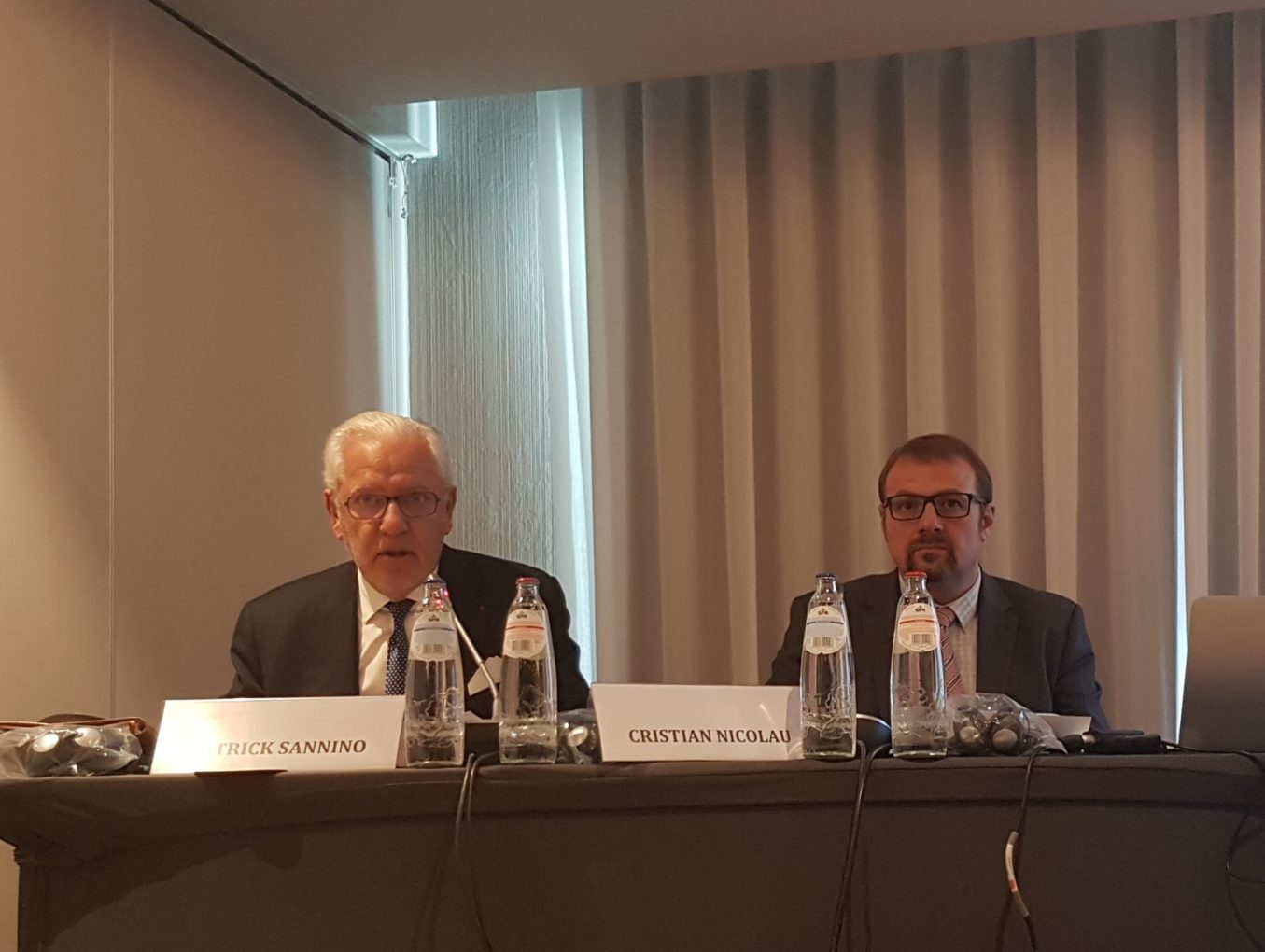Launched in January 2017, Find a Bailiff II (FAB II) project, co-funded by the European Commission, has held its final conference on the 15th of November 2018 in Brussels.
The European Chamber of Bailiffs (CEHJ), along with its partners, the Italian Ministry of Justice and the Bulgarian association Judgment Enforcement Development Initiative, had the great honour to outline the achievements made throughout the duration of the project in front of an audience from all over the European Union, including representatives of the European Commission and the Council of the European Union.
The opening speeches were delivered by the President of the CEHJ, Patrick Sannino, and the Head of Unit E-justice, IT and document management at the European Commission, Cristian Nicolau. The importance of the directory was highlighted during the opening session:
“Europe shows a great diversity of judicial systems, diversity which constitutes its richness but which is also a source of complexity.
It is this complexity that Find a Bailiff 2 project has addressed, aiming to help citizens and practitioners in their cross-border recovery of debt. […]
Find a Bailiff Directory enables the identification of the competent enforcement authority to handle a cross-border claim in Europe, being either a private bailiff or a court staff ” (P. Sannino).
The “National generic database”, open-source software developed during the project to enable the creation of National Bailiffs’ databases in few clicks, was presented to the audience. Once created, the National Bailiffs’ database is automatically connected to Find a Bailiff Directory (available on www.eubailiff.eu). The resource created in the course of the project was successfully utilised by both the Italian Ministry of Justice and the Bulgarian association Judgment Enforcement Development Initiative, with the support of the Bulgarian Ministry of Justice. The “National generic database” was especially useful for the Bulgarian Bailiff system, which, due to its duality of both state and private bailiffs, had up until now lacked a unified registry of all enforcement authorities in the country.
Moreover, the Bailiffs’ data are also automatically weekly uploaded in the European Court Database, as “competent authorities for enforcement” for the implementation of several EU Regulations.
In fact, Mathias Maurer, Project Manager at the Austrian Ministry of Justice, explained the purpose of the European court database (available on e-Justice portal: https://e-justice.europa.eu/content_european_judicial_atlas_in_civil_matters-321-en.do) and underlined the importance of providing information about Bailiffs/enforcement authorities.
The conference was the perfect occasion to probe an audience composed by users of the directory, including legal practitioners. Several questions were asked by the representatives of the three institutions carrying the project to get some user’s feeback of the directory and of the practice of EU regulations on enforcement. The organizers from the project team developed several scenarios that were presented and discussed with the audience, soliciting their active participation and highlighting the benefits of the EU Bailiff Directory and the numerous cases that it can help solve.
The use of an interactive online survey system permitted the direct participation of the audience showing also the importance of the FAB 2 national factsheets explaining the enforcement systems of several Member States.
The conference was closed by the Chairman of the e-Law/e-Justice Working Party of the Council of the EU, Alain Pilette. He described the challenges of the new e-Justice action plan 2019-2023, notably the consolidation of the e-Justice portal and the reinforcement of the involvement of legal practitioners in the implementation of this new plan. He drew special attention on the efficient collaboration between the CEHJ and the EU institutions.
The closing conference represented an interactive and engaging approach to highlighting the project achievements and sustainable results.




